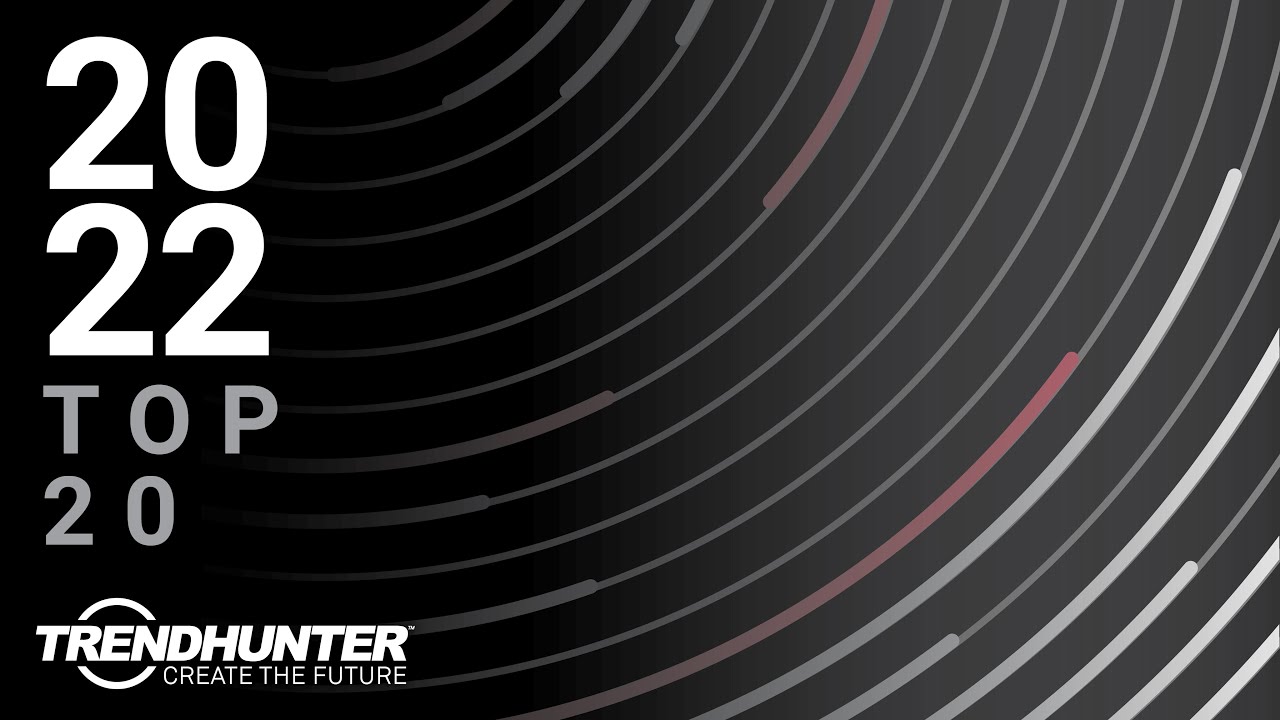In Digital Marketing
Top 20 Trends in 2022 Forecast | TrendHunter.coms 2022 Trend Report - read the full article about online marketing trends, Digital Marketing and All digital inbound channels from Trend Hunter on Qualified.One

Youtube Blogger

Though we aren’t quite there yet, the world is shifting away from the Chaos phase of the pandemic, and inching closer to recovery. Post-COVID exuberance, increased eco-friendliness and unexpected generational shifts--the Top 20 trends of 2022 show we’re moving into an exciting time of change. The Top 20 trends of 2022 are brought to you by Trend Hunter, the world’s most-powerful trend platform & Innovation Accelerator, powered by AI and big data.
At #20 is NFT Art-- NFT is a term you’ve probably heard a lot of this past year. It stands for non-fungible tokens, which Wikipedia explains as units of data stored on digital ledgers, called a blockchain, to certify digital assets. In this case, those assets are art. If a creative offers their art as an NFT, they create a kind of virtual exclusivity around the piece--with one example being Kings of Leons’ recently released album, which was the first-ever to be made into an NFT At #19, In-Game Inclusion is showing the way forward for the world of gaming. In what’s traditionally been a non-inclusive industry, inclusion is becoming a focus with everything from accessible game features to anti-racist storylines--responding to the growing calls for the industry to cater to all demographics.
18 on our list is Summer Cannabis, where the medicinal and recreational plant is being used in products associated with your stereotypical Summer; think BBQs and beaches. Everything from THC-infused canned cocktails to cannabis freezies offer alternatives to virgin or alcohol-based summery treats.
#17, Car-Free Retail, shows how businesses, urban planning and architecture can come together to create more eco-friendly cities. Pedestrian and cyclist-only neighborhoods and retail developments show a more sustainable way forward for design and urban planning.
At #16 we have Generation Dating. As dating turned almost entirely digital over the last year, the use of apps that connect users romantically went up. Where before these apps mostly targeted Millennials, they’re now accommodating the digital habits of older Gen Zs to bring them into the fold. Everything from TikTok-style videos to meme-sharing are being used in new dating app formats to connect to zoomers.
Carbon Offset comes in at 15, with brands in the food and beverage industry looking to reduce their impact on the environment with carbon-neutral and offsetting production processes. As the competition for eco-friendly products becomes more intense, brands are having to make authentic changes in order to draw in customers.
At #14 is Activism Pop-Up, which takes the exclusivity associated with pop-ups and links it to activism in order to build a sense of community and understanding among attendees. Sharing these common spaces helps social, political and environmental causes build momentum.
Coming in at #13 is Accessible Care, where healthcare platforms are being designed around marginalized communities that are often underserved when it comes to their health. Everything from cost-accessibility to the inclusion of trans people is now being prioritized by these more accessible healthcare platforms.
At #12 is P2P Community, where we’re seeing a growing number of platforms that offer activism and community support for issues like mental health. These have become especially popular in the past year as in-person support diminished for people all over the world under pandemic restrictions. Examples include addiction recovery support apps and online BIPOC wellness communities.
#11, Low-Alcohol Bar, is a new take on how younger Millennials and older Gen Z enjoy socializing. These age groups have missed social connection as much as anyone else in the last year. In a post-COVID world, restaurants and bars will offer low-alcohol menus that target young people looking to connect with friends, without excessive drinking involved.
At #10 we have International Keto, where North American brands that offer ketogenic diet-friendly foods are taking cues from global flavors--particularly Asian ones. Offerings like keto-friendly vegan ghee and kimchi snacks come in response to consumers’ demanding more diversity in the diets they subscribe to.
#9, Farm-to-Phone, merges traditional industry with modern customer habits by connecting consumers with fresh produce from local farmers via digital apps. This convergence has been especially useful as COVID-19 restrictions limit in-store or market interactions between small business owners and their customers.
At #8 we have Nature Novice, another trend that’s popped up as a result of the pandemic. With many forms of travel and tourism not currently an option, outdoor adventure tourism has seen a surge in popularity--and brands are accommodating those who are new to this form of travel. Examples include slow-paced cycling trips and hiking routes.
Another travel-related pandemic shift can be seen in our 7th trend, Hyper-Convenient Camping. As travel restrictions ease up, people are itching to get outside and feel the freedom they’ve been missing in the last year. Things like camping and adventure-based tourism are surging in popularity and being made more accessible for beginners, as traveling and being in nature becomes a priority for more consumers.
Sanitization Health comes in at #6, where the popularity of the skincare industry merges with the past year’s focus on personal hygiene and produces hand sanitizer as a part of consumers’ skincare routines. Brands are responding to this in-kind with sanitizing products that mimic the sophisticated formulas seen in the skincare space.
At #5 we have Health Hub, an extension of smart home systems that prioritize the personal health of users. Everything from sleep to medication-tracking are now being managed by connected hubs with product’s like Amazon’s Alexa offering audio reminders.
A different type of health focus can be seen in our 4th trend, Tech Fatigue. Changes to both social and professional lifestyles over the past year have necessitated a complete transition to digital--and tech fatigue has become a consequence of this shift. Some brands are battling this form of burnout with everything from social media-blocking to more inclusive virtual spaces.
At # 3 is Boomer Tech, where digital habits that have typically been common among younger demographics have seen a boost among seniors. Everything from virtual fitness to social apps like Snapchat are seeing a boost in senior memberships and subscriptions.
Coming in at #2 is Millennial Move, which addresses the lifestyle transitions that many Millennials have faced amidst the pandemic. High living costs in cities, the lessened need to commute, job losses, growing families and reevaluating life goals have all contributed to Millennials moving away from the fast-paced urban lifestyle. Brands and institutions are helping to facilitate this shift with everything from remote work stays to adaptable modular homes.
Last but not least is Gen Z Creative--a trend that’s been on display over the past year in-particular, and will continue to dominate creative, entertainment, and pop-cultural spaces. Here we see Gen Z developing skills outside of the traditional school system and using them to their benefit--either monetizing them now or securing their futures. This generation is leading the way as the roaring 20s finally commence.
Trend Hunter: Top 20 Trends in 2022 Forecast | TrendHunter.coms 2022 Trend Report - Digital Marketing

